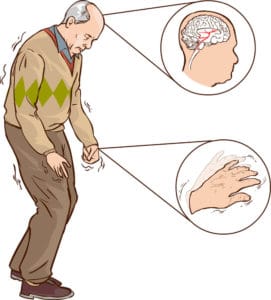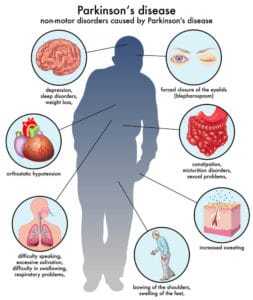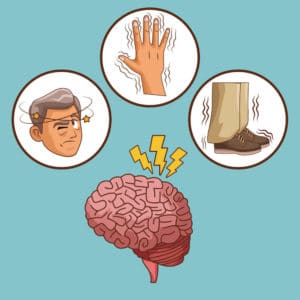Pennsylvania belongs to the states with the highest prevalence of Parkinson’s disease with 1,548 per 100,000 of the population. This means there is a larger proportion of high-risk factor patient groups in the state.
Patients with Parkinson’s disease can qualify for medical marijuana. To gain access to an MMJ card, visit our Pennsylvania page.

In addition, they said that across the country, approximately 60,000 Americans are diagnosed with PD each year.
The Center for Disease Control and Prevention reports that the Parkinson’s disease mortality in Pennsylvania is 8.7 with 1,610 deaths per 100,000 total population.
Parkinson’s disease (PD) is a neurodegenerative disorder that affects predominantly dopamine-producing (“dopaminergic”) neurons in a specific area of the brain called substantia nigra.
In simpler terms, it’s a progressive nervous system disorder that affects movement.
This brain disorder leads to shaking, stiffness, and difficulty with walking, balance, and coordination.
The National Institute of Neurological Disorders and Stroke stated that the cause of PD is unknown, but some cases are hereditary while others are thought to occur from a combination of genetics and environmental factors that trigger the disease.
It is thought that when a person has PD, the brain cells become damaged or die in the part of the brain that produces dopamine, a chemical needed to produce smooth, purposeful movement.
Other facts related to PD are:
There are three main forms of parkinsonism, as well as other related conditions:
What causes Parkinson’s Disease?
Scientists believe that the following contribute to the occurrence of PD:
PD’s physical and mental manifestations can complicate basic daily activities like bathing, dressing, eating, sleeping, and walking. Patients with PD would need to adjust to the changes that can be brought about by the illness.
Others diagnosed with PD may be stunned and struggle with what the future may look like. Progressive changes to the motor and many other non-motor symptoms can be challenging to deal with.
The four primary symptoms of PD according to the National Institute of Neurological Disorders and Stroke are:

There is currently no cure for Parkinson’s. A variety of medications, surgical treatments, and other therapies are being given to patients with PD that provide relief from the symptoms.
Medicines prescribed for Parkinson’s are used to:
Another option for PD treatment is deep brain stimulation (DBS) where electrodes are implanted into the brain to painlessly stimulate the brain to block signals that cause many of the motor symptoms of PD.
Medical marijuana has become another alternative for the condition. With it being legal in most states, researchers are testing marijuana as a treatment for many illnesses and diseases, including Parkinson’s.
Medical marijuana is thought to alleviate the symptoms of neurological conditions like Parkinson’s disease. It has been observed that medical cannabis improves both motor and non-motor symptoms of PD.
If you are considering using medical marijuana, and you would like to get a medical card and a doctor’s recommendation, we can help you get started through our HIPAA-compliant application on our online platform.
